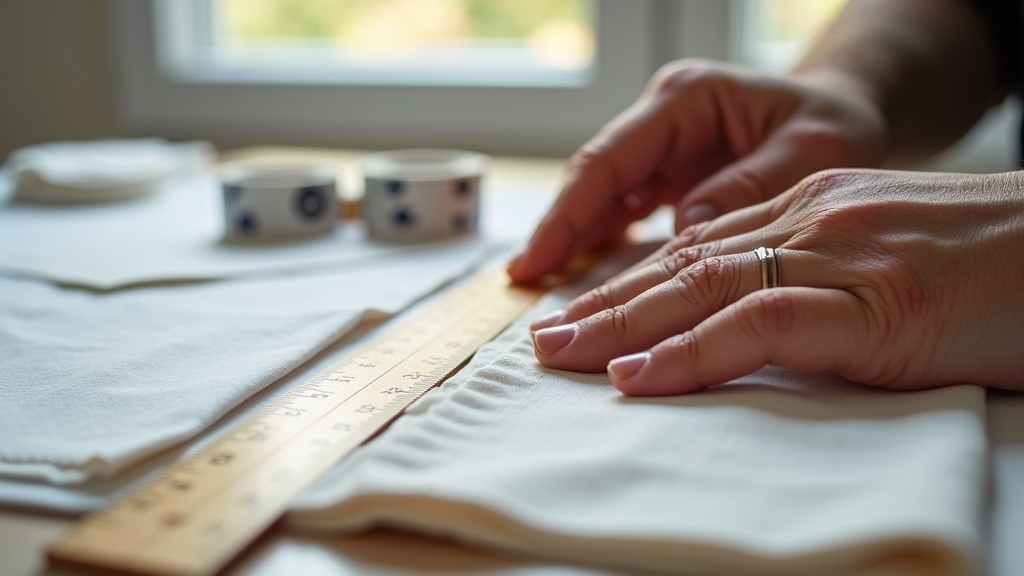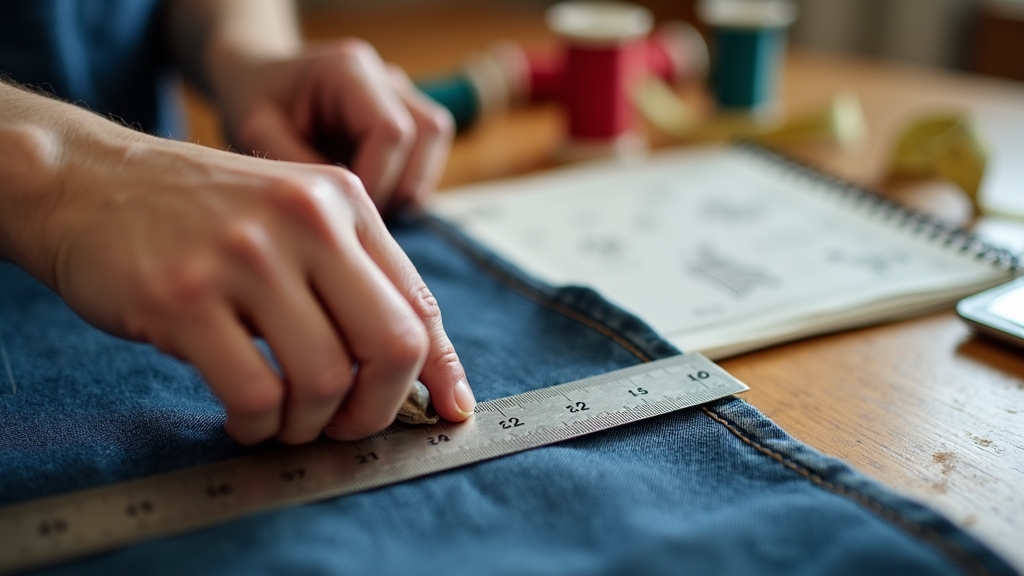
To measure linear inches, use a flexible tape measure to find your object’s length, width, and height, including any handles, wheels, or pockets. Lay the object flat or upright for accurate readings, measuring width at the widest point and height with any protrusions extended.
Add these three dimensions together for the total linear inches. Record values precisely, rounding up if needed for irregular surfaces. Understanding this method helps you guarantee compliance with size restrictions and precise dimensioning for various applications.
Key Takeaways
- Measure the length, width, and height of the object including all protrusions like handles and wheels using a tape measure or ruler.
- Place the object on a flat, stable surface for accurate measuring of each dimension.
- Record each dimension in inches, rounding up to account for irregularities or attachments.
- Add the three measurements together to find the total linear inches (length + width + height).
- Double-check measurements for accuracy and ensure consistent units before recording final linear inch value.
Understanding the Concept of Linear Inches
Linear inches represent a single dimension—length, width, or height—measured in units like inches, feet, or yards within the English system.
To calculate linear inches, you add these dimensions together. For example, a bag measuring 30 inches long, 12 inches wide, and 20 inches high has 62 linear inches (30 + 12 + 20). This total includes external pockets, accessories, wheels, and handles, which must be accounted for in the measurement.
This measurement method is vital in contexts such as airline luggage restrictions and construction, where precise dimension calculations matter. Many satchels and bags specify linear inches to ensure they fit within luggage size limits.
Linear inches can also convert to metric units like centimeters, enhancing versatility. Understanding this concept helps you avoid common errors like confusing linear measurement with volume or mixing units. Precision and context-awareness are essential when applying linear inches in practical scenarios.
Tools Required for Measuring Linear Inches
To measure linear inches accurately, you’ll want to have the right tools on hand. Whether you’re dealing with flexible items or measuring longer distances, there are specific instruments that can help. For instance, soft tapes are great for measuring items that can bend, while laser measures are perfect for those longer stretches where precision is key.
Now, picking the right tool really depends on what you’re measuring. Is the object rigid or flexible? How large is it? And how precise do you need to be?
Many specialized measurement systems are designed to support woodworking machinery and improve manufacturing quality. Consistently using flexible measuring tape ensures accuracy when measuring curved or irregular surfaces.
Measuring Instruments Overview
Although measuring linear inches can seem straightforward, selecting the right instrument is essential for accuracy and efficiency. Steel rules offer quick measurements with typical accuracy from 1/16″ down to 1/100″, suitable for low to moderate precision.
Vernier calipers provide decimal precision up to 0.001 inch, measuring external, internal, and depth dimensions with a sliding scale mechanism. Micrometer calipers deliver even higher accuracy, up to 0.0001 inch, ideal for precise external diameter measurements.
Dial and digital calipers combine ease of use with 0.001-inch precision, reducing reading errors.
Height and depth gauges measure vertical and recessed dimensions, often using Vernier or digital scales for accuracy comparable to calipers. Proper maintenance techniques ensure these tools retain their precision over time.
The choice of measuring device depends on the required tolerances and accessibility of the dimension to ensure optimal measurement accuracy. Each instrument’s design suits specific measurement tasks, ensuring precise linear inch readings when used correctly.
Choosing Appropriate Tools
When selecting tools to measure linear inches, you must consider the required precision, measurement type, and application. For general length measurements, steel rules and vernier calipers suffice, offering accuracies to 1/32″ and 0.001″ respectively.
Use vernier calipers or micrometers for internal, external, or depth dimensions when higher precision is necessary. Micrometers provide superior accuracy, measuring to thousandths or ten-thousandths of an inch, and feature interchangeable tips for versatility.
Dial indicators help detect surface variations in metalworking. Digital calipers simplify readings, while vernier scales enable fine interpolation. Ensure your tools are regularly calibrated for consistent accuracy. Regular maintenance of measurement tools, similar to the proper care needed for luggage components, can significantly extend their lifespan.
Tailor your choice to your field: woodworking favors steel rules and calipers, metalworking demands micrometers and dial indicators, and engineering requires precision instruments. Always match the tool to your measurement’s precision and application needs.
Additionally, enabling cookies and JavaScript in your browser ensures access to online measurement tools and resources without interruption.
Step-by-Step Guide to Measuring Length, Width, and Height
Before measuring your item, make certain it rests on a flat, stable surface to guarantee accuracy. Start by measuring height with the item upright, including wheels or handles. This ensures you capture the total luggage dimensions as airlines specify.
Next, measure width at the widest point, accounting for side pockets or attachments.
Finally, measure depth (length) from front to back while the item lies flat. Remember, linear inches are determined by adding these three dimensions together to ensure your luggage complies with airline size limits.
Use a flexible tape to follow curves without stretching.
| Dimension | Measurement Tips |
|---|---|
| Height | Upright, include protrusions |
| Width | Widest section, include pockets |
| Depth | Front to back, include bulges |
| Tools | Flexible tape, flat surface |
| Accuracy | Round up, double-check irregularities |
Record each measurement in inches, rounding up as needed for precision.
Calculating Total Linear Inches From Measurements
Hey there! To start, grab a measuring tape and take some accurate measurements of your object. Make sure to include the length, width, and height, and don’t forget any protrusions like handles or wheels.
Once you have those measurements, it’s time to do some simple math. Just add those three dimensions together to get your total linear inches. This total is super important because it helps you figure out if your object meets size restrictions in various industries.
For objects with regular shapes like rectangles or squares, you can calculate the total linear inches by doubling length and width measurements or multiplying the side length by four, respectively, to get an accurate perimeter measurement called total linear inches.
Understanding how to measure total linear inches is also essential when selecting luggage with spinner or inline wheels to ensure compliance with airline size limits.
Measuring Length Width Height
Accurately measuring the length, width, and height of your luggage is essential for calculating total linear inches. Use a flexible measuring tape and place the luggage on a flat surface with handles and wheels extended.
Focus on the bulging or widest points to capture true dimensions. Measure each dimension in inches and record them precisely without rounding. Remember that linear inches measure length along a single dimension, which helps simplify understanding of the total size.
Ensuring your luggage dimensions comply with airline size restrictions can prevent issues during check-in. Follow these steps:
- Measure length as the longest edge, front to back.
- Measure width side to side at the widest point, excluding handles.
- Measure height top to bottom, including protruding wheels or handles.
- Confirm all measurements by double-checking and noting decimals or fractions.
These exact measurements ensure compliance with airline or shipping size restrictions.
Adding Dimensions Correctly
When you add length, width, and height measurements, you calculate the total linear inches that define your luggage’s size. Use the formula: Linear Inches = Length + Width + Height.
Include all external protrusions like handles, wheels, or expandable sections to guarantee accuracy. Measure length, width, and height at the widest and tallest points with the luggage lying flat. It is important to include wheels and handles in all measurements to ensure compliance with airline size limits.
For rectangular objects, simply add these three dimensions. For squares, multiply one side by four to get the perimeter. Circular items require multiplying the diameter by π for circumference. For complex or oval shapes, apply appropriate formulas or tools to approximate edge dimensions.
Always round up to the nearest whole inch to comply with airline and shipping standards, avoiding oversize fees or shipment rejections. Remember that many airlines have specific underseat luggage size restrictions, so verifying your calculated linear inches against those limits is essential for hassle-free travel.
Common Uses of Linear Inches in Everyday Life

How do you determine if your luggage meets airline size restrictions or if a package qualifies for standard shipping rates? You measure the linear inches by summing length, width, and height. This simple calculation guarantees compliance and accurate pricing.
Here are common everyday uses of linear inches:
- Airline luggage: Confirm your suitcase doesn’t exceed the 62 linear inch limit to avoid fees. Measuring all protruding parts, such as handles and wheels, ensures your bag fits within the airline size limits.
- Shipping: Calculate package dimensions for carrier classification and cost estimation.
- Construction: Measure materials like lumber or pipes by totaling their linear dimensions.
- Home improvement: Assess lengths for flooring, baseboards, or curtain rods to purchase correct amounts.
Using linear inches streamlines measurements, enforces standards, and facilitates precise planning in these scenarios. Linear measurement uses units like inches and feet specifically to measure length.
Tips for Accurate Measurement and Recording
Measuring linear inches correctly starts with selecting the right tools and preparing your workspace. Use a tape measure or ruler with clear markings on a flat, stable surface. Align the zero point precisely at the object’s edge.
Because linear inches measure the straight line length of an object, keep your measuring tool straight and taut to ensure accuracy. Proper handling and maintenance of measuring tools contribute to consistent and reliable measurements.
Record each measurement immediately, labeling height, width, and depth distinctly. Repeat measurements twice to ensure accuracy, rounding up to the nearest inch. When measuring irregular shapes, apply the appropriate formulas and include all protrusions.
| Step | Best Practice |
|---|---|
| Tool Selection | Use undamaged tape/ruler |
| Surface | Choose flat, stable base |
| Measurement | Align tool precisely, include protrusions |
| Recording | Note dimensions immediately, label clearly |
Converting Linear Inches to Other Units
Why convert linear inches to other units? You’ll often need to translate linear inches for clarity, compatibility, or precision in various fields. Here’s how to approach conversions:
- To convert inches to feet or yards, divide by 12 for feet, then by 3 for yards (e.g., 36 inches = 1 yard).
- For metric units, multiply inches by 2.54 to get centimeters; divide by 100 for meters. A detailed conversion table can help you find exact values when working with fractional inches.
- When precision is key, convert inches to millimeters by multiplying by 25.4, or to microns by multiplying by 25,400.
- To measure perimeters or circumferences in linear inches, apply shape-specific formulas (e.g., circle circumference = diameter × π).
These conversions maintain linear scale and ensure your measurements fit the intended application accurately.
Avoiding Common Mistakes When Measuring Linear Inches
Although measuring linear inches seems straightforward, overlooking small details can lead to significant errors. You must include all protrusions like wheels and handles and measure external dimensions only. It is important to measure from the widest points of your luggage, including all handles and wheels, to ensure you capture the full linear dimensions.
Avoid estimating and use precise tools. Always measure your object on a flat surface and align the tool correctly. Record measurements immediately and double-check by repeating measurements. Verify consistent units throughout.
| Common Mistake | Correct Practice |
|---|---|
| Ignoring protrusions | Include wheels, handles, bulges |
| Measuring internally | Use external dimensions only |
| Estimating values | Use precise tape or ruler |
| Skipping repeats | Repeat measurements for accuracy |
| Mixing units | Keep consistent units (inches) |
Frequently Asked Questions
Can Linear Inches Include Curved or Irregular Surfaces?
You might find it intriguing that linear inches don’t naturally embrace curves or irregular surfaces. Instead, you measure those by gently following the contour with a flexible tape, capturing the linear distance along the curve.
You then approximate the total length by summing small straight segments. This technique guarantees precision, as rigid tools fall short on irregular shapes.
How Do Airlines Enforce Linear Inch Restrictions at Check-In?
At check-in, airline agents measure your bag’s length, width, and height using luggage sizers or measuring tapes, including wheels and handles. If your bag exceeds the allowed linear inches, they’ll require you to check it or pay oversized fees.
Gate agents may re-measure carry-ons before boarding, especially when overhead space is tight. You’ll be informed about size limits during booking and check-in to prevent issues.
Are Linear Inches Used in International Shipping Regulations?
Imagine a box weighed down by numbers, but not by linear inches.
You won’t find linear inches governing international shipping regulations. Instead, carriers like FedEx or DHL calculate costs using dimensional weight—multiplying length, width, and height, then dividing by a set factor.
So, when shipping worldwide, focus on volume and weight metrics, not a simple sum of dimensions. Linear inches remain an airline baggage measurement, not a shipping standard.
Can Linear Inches Be Applied to Flexible or Soft Materials?
You can apply linear inches to flexible materials, but it’s tricky. Since these materials bend or compress, you’ll need to lay them flat without stretching and measure length, width, and height at their thickest points.
Use a flexible tape measure for accuracy. Keep in mind, inconsistent handling can skew results. Many industries prefer evaluating flexible items by fitting them into a sizer box rather than strict linear inch totals.
What Is the Difference Between Linear Inches and Perimeter?
Imagine wrapping a ribbon around a box versus stacking rulers along its edges. Linear inches add length, width, and height to show an object’s size in space.
Perimeter traces only the outline of a flat shape, measuring its boundary length. You use linear inches for volumetric limits like luggage, while perimeter suits flat areas like room boundaries or fencing layouts.
Turn Every Project Into a Perfect Fit with Accurate Inch Measuring
Just like a skilled carpenter measures every inch to build a perfect frame, you too can master measuring linear inches with precision. By using the right tools and following clear steps, you guarantee accuracy whether you’re shipping a package or planning a project.
Remember, careful measurement avoids costly mistakes and keeps your work aligned. Keep these techniques handy, and measuring linear inches will become second nature—exact, reliable, and efficient every time.
